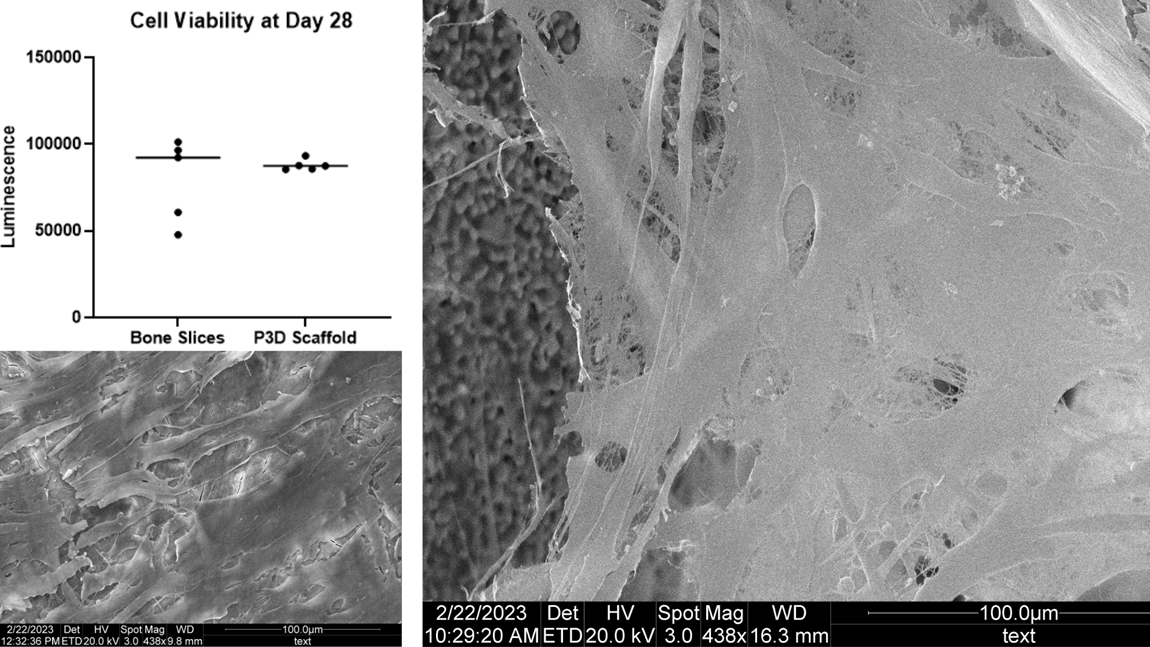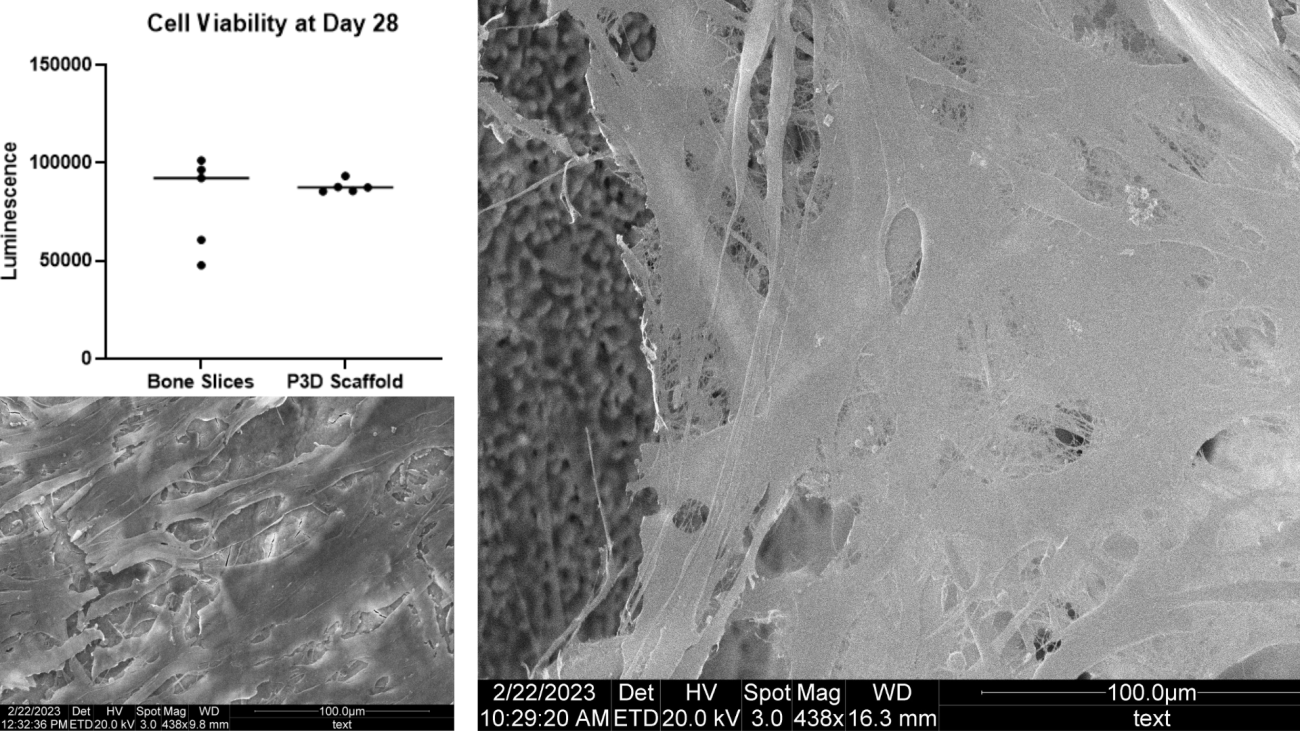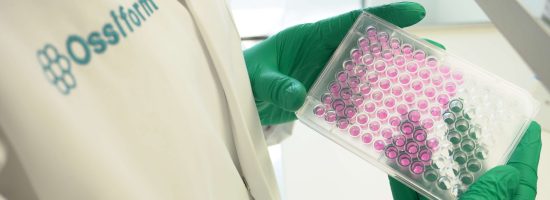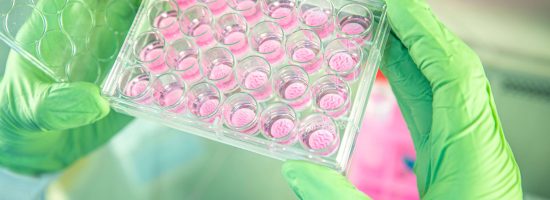Comparing P3D Scaffolds to slices of real bone

Comparing P3D Scaffolds to slices of real bone
As part of a larger study, the bioceramic bone-mimicking P3D Scaffolds have been compared to natural bone slices. No significant difference was found in cell viability after 28 days between slices of bone and the P3D Scaffolds. This also appears on the graph in the upper left corner. Furthermore, the variance within the test groups is much lower in the P3D Scaffolds than in the bone slices group.
The SEM images below show osteoblast-produced collagen on a P3D Scaffold (to the right) and a bovine bone slice (to the left).
Combined with the scaffolds’ physical resemblance with bone in terms of calcium phosphate content, porosity, and stiffness, the P3D Scaffolds present an obvious alternative to traditional cell culturing and hydrogel-based 3D cell culture systems.

The lower left image shows a bone slice with collagen produced by osteoblasts. The large image on the right side shows a bioceramic P3D Scaffold with collagen produced by osteoblasts.


